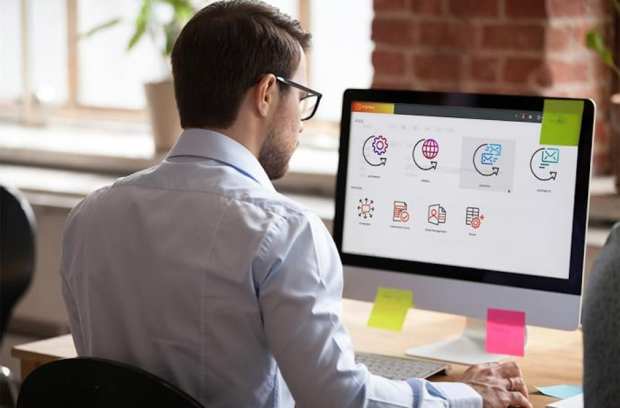Why Paper Remains A Key Tool In Helping SMBs Get Paid

Remote working requirements have introduced a major headache for accounts receivable (AR) teams all over the world, especially those that continue to rely on paper.
Without the ability to generate physical invoices in the office and send them through the mailroom, billing clients and getting paid has never been more difficult, particularly amid a slowdown of the U.S. Postal Service.
The result of this conundrum has been an unprecedented acceleration in enterprise digitization. But not every company is willing to let go of paper, particularly when it comes to AR workflows like invoicing.
Alyna Wnukowsky, chief solution officer for Business Process Automation at Quadient, told PYMNTS that small- to medium-sized businesses (SMBs) cannot be left out of the financial service community’s recent rush to help businesses that are newly-digital and in need of remote invoicing solutions.
Indeed, she said, physical invoices still remain an important part of many SMBs’ operations. As Wnukowsky described, offering a solution that can support both physical mail and digital invoicing may help ease the pain of a remote work environment while gradually helping to shift these businesses out of the paper rut.
Persistent Paper
The need to send invoices through the mail remotely has existed for quite some time, but according to Wnukowsky, demand for this capability spiked during the pandemic as a result of work-from-home requirements.
“Normally you get an invoice and validate it, and send it from your mailroom, which, during the pandemic, is really difficult,” she said. “Now, you have people working remotely, and you need to make sure you can still send out your invoices.”
For some companies, this is the opportune moment to shift away from the mail and toward digital eInvoicing solutions. For others, however, mailing the bill still remains the preferred AR method.
To understand why, Quadient surveyed several hundred of its SMB customers and discovered that while the majority of them are looking to automate, mailing invoices persists. A sentiment of the validity of a physical document over an electronic one may be the cause.
“One answer is that they feel an invoice is still more formal when sent by the mail, and they feel that it generates higher payment rates,” explained Wnukowsky.
At the same time, many of these businesses’ own customers are in various stages of modernization themselves, with accounts payable (AP) departments that may not be entirely ready to receive an electronic invoice. It’s vital, Wnukowsky added, that businesses are not only able to send invoices the way they prefer, but the way their own customers prefer, too.
How Omnichannel Eases The Shift
While it is particularly challenging for smaller companies to make the shift from paper to digital, the drawbacks of relying on the mail and paper to issue invoices make the failure to modernize a non-optimal, and potentially dangerous, decision.
With pandemic-related fraud on the rise, paper-based invoice workflows run the risks of a lack of security. Coupled with the continued slowdown of the U.S. Postal Service, sending paper invoices through the mail may no longer be a viable option for SMBs.
While Wnukowsky said that Quadient’s business customers have yet to voice complaints about the postal service slowdown, the interest among these firms to digitize presents an opportunity for service providers like Quadient to help ease that transition.
The company recently expanded its Impress platform with its Impress Distribute solution, a tool that allows businesses to issue invoices remotely — including via the mail, email, or through an online portal. By offering businesses this choice, Wnukowsky said SMBs can gain control over when and how they migrate away from paper.
“They can switch, they can even test it, and start to send one part of their communications digitally,” she said. “They can see how it works. We support them through — that’s the idea.”
There are benefits to mailed invoices, too. Emails can be bounced back, and some recipients may indeed view a paper invoice as more legitimate than an emailed one. If one strategy fails, Quadient is able to initiate the process via a different channel, ensuring SMBs that their invoices will get to where they need to go.
As a proponent of going digital, Wnukowsky admitted that she, too, has wondered why SMBs remain so stuck on physical documents and mail. But SMBs are facing unprecedented pressures today, and the sudden digitization shifts that the market has seen among larger enterprises may not be entirely possible for the SMB community.
Whether invoices are emailed, mailed or sent another way, what’s important is that AR teams can place bills with the right customers in a timely fashion to ensure that these businesses get paid as quickly as possible.
“This is a solution that enables customers to send their invoices from anywhere in the best channel for them and their customers,” said Wnukowsky. “I really hope that we help these small businesses because this is at the center of every company. You need to get out your invoices, and you need to get paid.”
